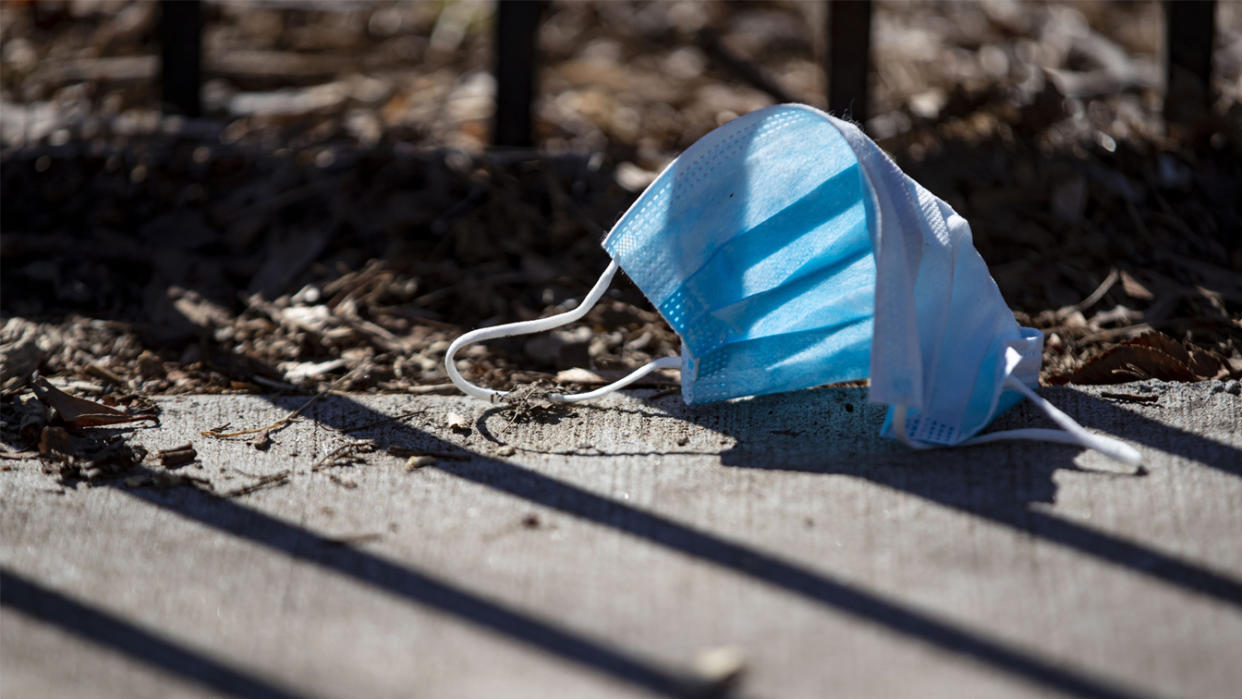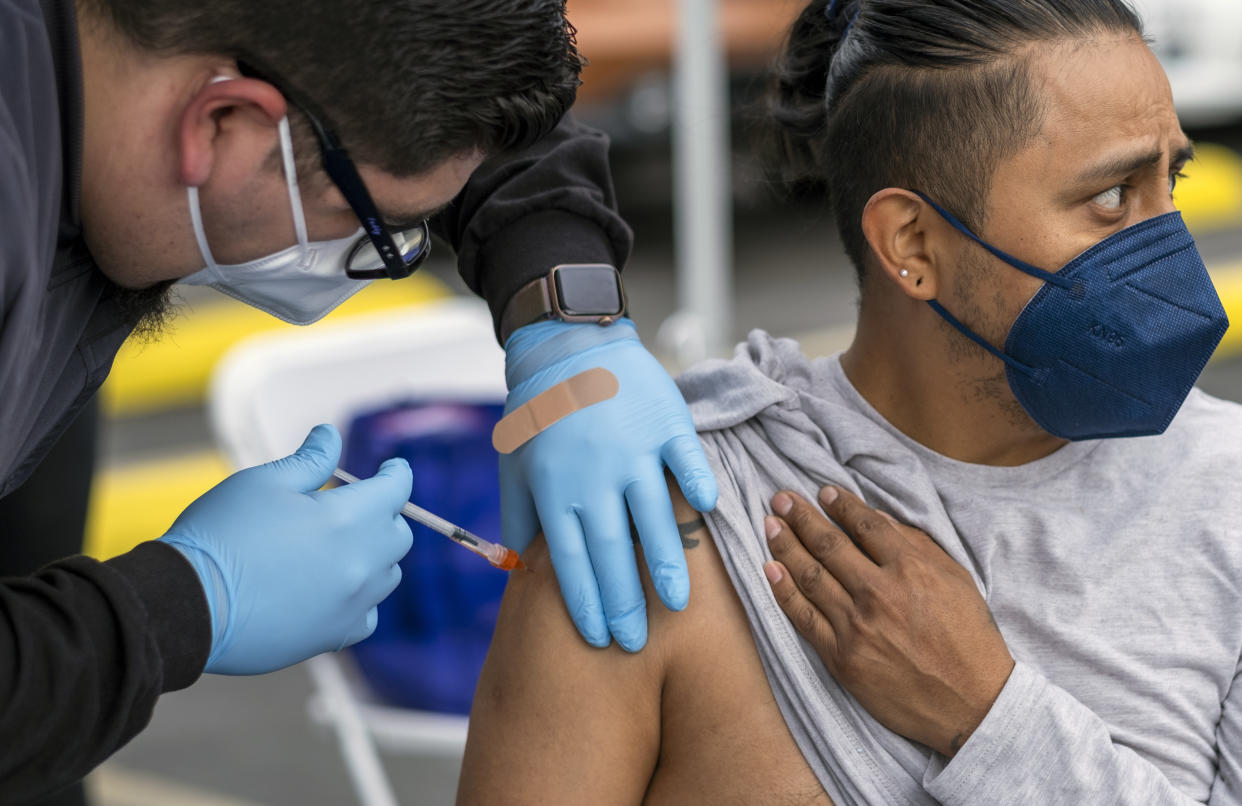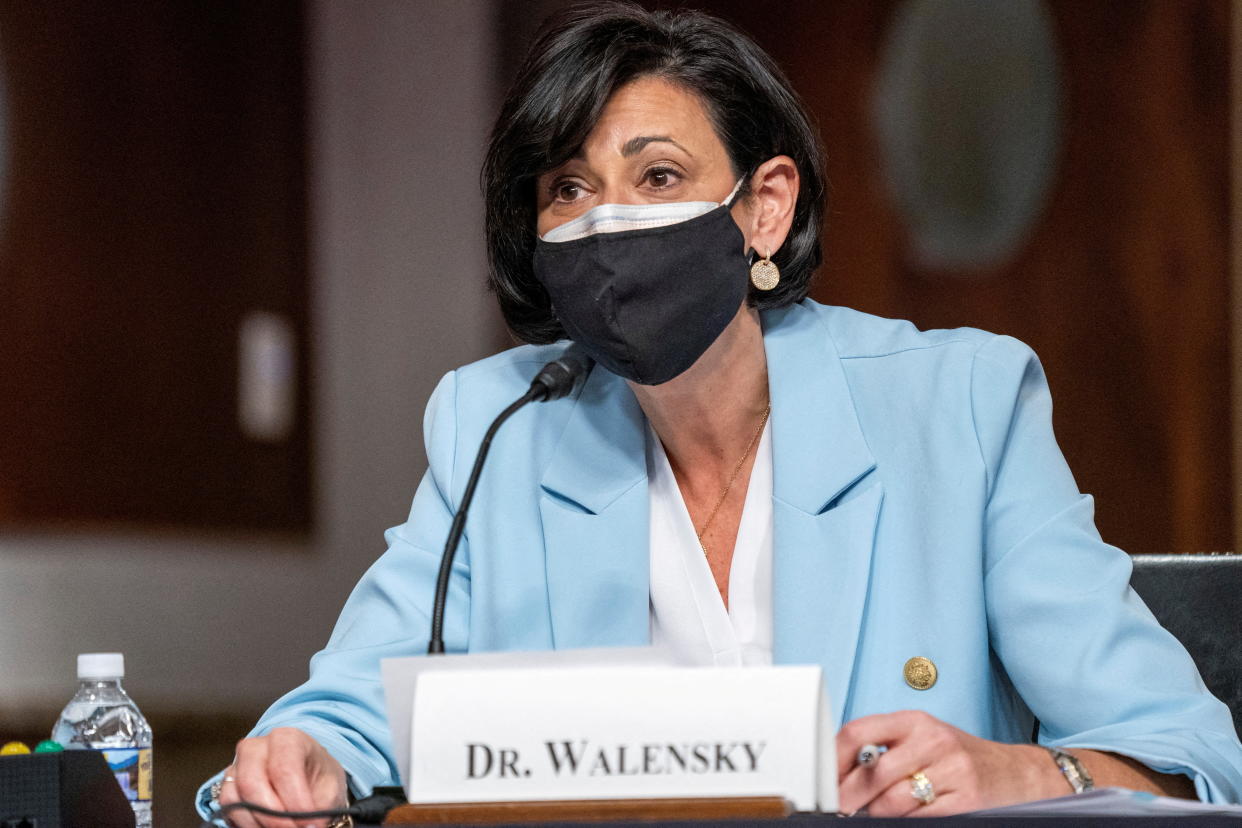The end of mask mandates? CDC eases guidelines for schools and public spaces, signaling larger shift.
Amid plummeting COVID-19 rates, the Biden administration eased its indoor mask recommendations Friday for about 70 percent of Americans, including most schoolchildren — a shift that could hasten the end of mask mandates in the United States.
Before Friday, more than 96 percent of U.S. counties were considered areas of “substantial” or “high” transmission, where the Centers for Disease Control and Prevention recommended masking in most indoor settings.
Now just 37.3 percent of counties fall into that category, according to Greta Massetti, an epidemiologist on the CDC’s COVID-19 Response Incident Management Team. In the coming weeks, that number will continue to drop as America’s winter Omicron wave recedes.

At the same time, the CDC also announced that it will no longer be recommending universal masking in all schools regardless of COVID rates. Instead, the agency will now recommend universal school masking only in communities where it believes COVID rates necessitate masking inside all public spaces.
“We want to give people a break from things like mask wearing when our levels are low,” CDC Director Rochelle Walensky said during a news briefing. “We’re in a stronger place today as a nation, with more tools to protect ourselves and our communities from COVID-19, like vaccinations, boosters, broader access to testing, availability of high-quality masks, accessibility to new treatments and improved ventilation.”
Friday’s announcement did not represent a change in thinking about the effectiveness of indoor masking, as studies continue to show that it has a role to play in minimizing spread and sickness during a surge. Rather, the new guidance came as part of a broader update to the way the CDC defines high, medium and low levels of COVID risk.
Previously, CDC guidelines urged universal indoor masking in areas of “substantial” or “high” transmission based primarily on the number of local cases detected each week. When those thresholds were first established in November 2020, they reflected the latest science.
But as both testing and immunity increased — and as the extremely contagious yet less severe Omicron coronavirus variant made mild infections a lot more common — raw caseloads became a less accurate measure of risk. As a result, cities like Los Angeles, which have hewed to the CDC’s old guidelines, have found themselves requiring residents to mask up for longer — and until the countywide positivity rate falls much lower — than would have been necessary in 2020, before anyone was vaccinated.

To fix this problem and keep pace with the evolving nature of the pandemic, the CDC will now also “evaluate factors that reflect the severity of disease, including hospitalizations and hospital capacity” when gauging risk, Walensky explained — which will then “inform CDC recommendations on prevention measures like masking.”
“As the virus continues to circulate in our communities,” Walensky added, “we must focus our metrics beyond just cases in the communities, and direct our efforts toward protecting people at high risk for severe illness [in order to] prevent COVID-19 from overwhelming our hospitals and our health care system.” The CDC will urge only counties considered to be at a “high” level of risk — as opposed to “medium” (currently 39.6 percent of counties) or “low” (23 percent) — to require masks indoors.
The impact will be immediate — a precipitous drop in the share of U.S. counties where the agency recommends indoor masking (as well as for all schools located within those counties).
On Friday, Walensky warned that “none of us know what the future may hold for us and for this virus,” adding that “we need to be prepared ... to reach for [masks] again when things get worse in the future.” SARS-CoV-2 is a lot more adaptable and unpredictable than scientists anticipated, and many worry that as long as billions of people worldwide remain unvaccinated, more evasive — and possibly more virulent — variants could easily emerge.
Meanwhile, an estimated 7 million Americans are immunocompromised, no children under 5 have been vaccinated, and “long COVID” looms as a real concern.
Acknowledging these threats, Walensky was clear. “Please remember there are still people at higher risk,” she said. “Anybody is certainly welcome to wear a mask at any time if they feel safer wearing a mask.”

But the question going forward is whether America will ever mandate face coverings again — especially in light of studies that show, as Massetti put it Friday, that “people who wear high-quality masks [such as N95s, KN95s and KF94s] are well protected even if others around you are not masking.”
For months, many Americans — particularly residents of the nation’s reddest regions — have not been required to mask up anywhere. Some have resisted masking for even longer, and governors such as Florida’s Ron DeSantis, a presidential hopeful, have gone so far as to ban local mask requirements.
In contrast, liberal leaders have largely sided with public health experts in recognizing that indoor masking can help limit infection and illness.
Yet as Omicron cases have plummeted in recent weeks, Democratic governors from California to New York have also decided to lift their own indoor mask mandates — and signaled that this time, such requirements might be gone for good.
“We are moving past the crisis phase into a phase where we will work to live with this virus,” California Gov. Gavin Newsom, a Democrat, said last week. “People are looking forward to turning the page.”
Ever cautious, the CDC is certainly not leading the move away from mask mandates. But with its new guidelines, the agency may be ushering in the beginning of the end. Unless things get really bad in the future, Friday may be remembered as the moment that U.S. masking officially became less of a collective obligation and more of an individual choice.


